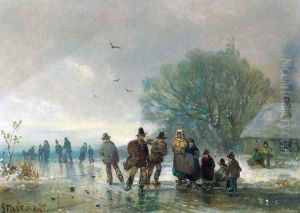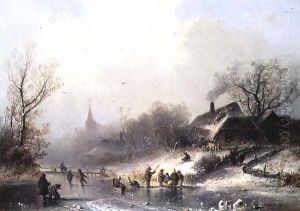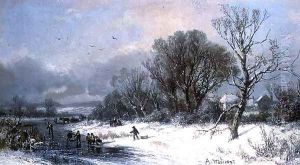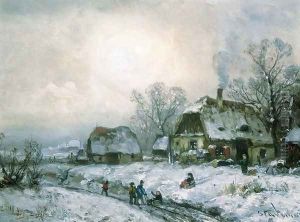Adolf Stademan Paintings
Adolf Stademan, though not widely known outside of specialized art circles, was a German landscape painter born in Munich in 1824. His work is characterized by meticulous detail and a romantic sensibility, often depicting the Bavarian countryside with a particular fondness for atmospheric effects and the changing seasons.
Stademan studied at the Academy of Fine Arts in Munich, where he was influenced by the prevailing Romantic movement. This influence is evident in his landscapes, which typically convey a sense of the sublime and a deep appreciation for nature's beauty. His works often feature dramatic skies, serene bodies of water, and rich, lush forestry, capturing the mood and light of various times of day and weather conditions.
Throughout his career, Stademan exhibited his work in various galleries and won acclaim for his ability to render nature with such authenticity and emotion. Despite this, he did not achieve the same level of fame as some of his contemporaries. Nevertheless, his paintings can be found in several European art collections and continue to be appreciated by those who value 19th-century landscape painting.
Adolf Stademan continued to paint throughout his life, maintaining a consistent output and dedication to his craft until his death in 1919. His legacy lives on through his contributions to the genre of landscape painting, where his work stands as a testament to the Romantic spirit in German art during the 19th century.



